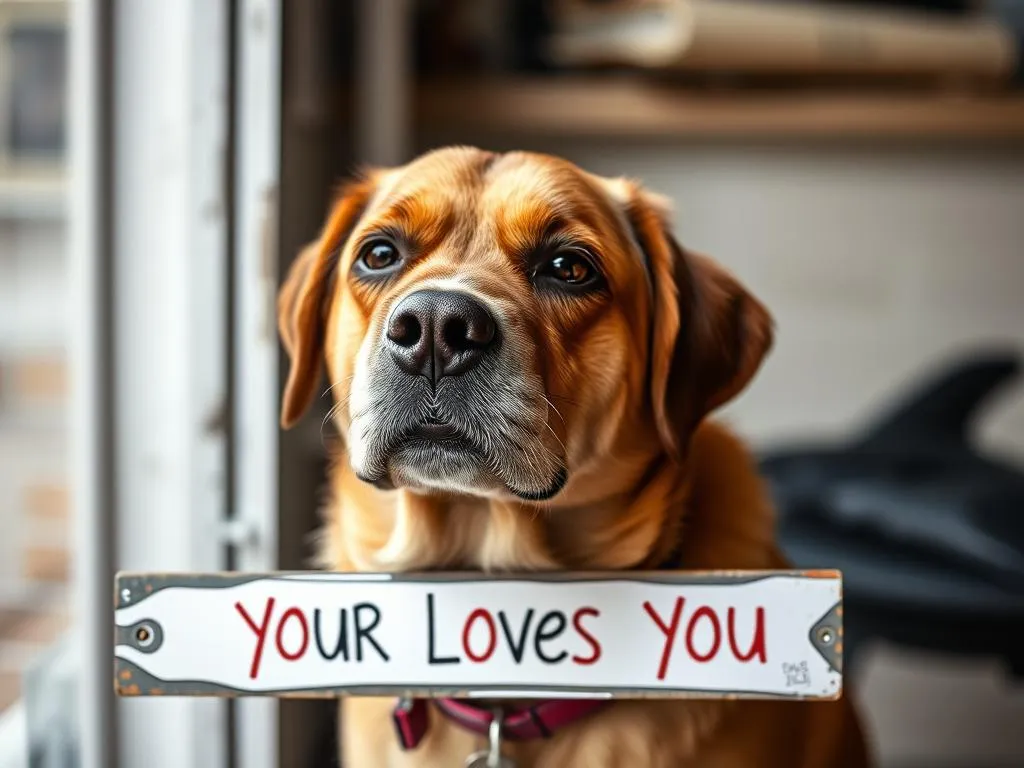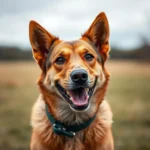
Introduction
Dogs are often referred to as man’s best friend, and for good reason. Their unwavering loyalty and affection make them cherished companions. However, understanding the nuances of canine affection is essential for every dog owner. Just like humans, dogs have emotions, but they express love in unique ways that differ from our own. Recognizing these signs can strengthen the bond between you and your furry friend, leading to a more fulfilling relationship. This article aims to help dog owners identify the signs your dog loves you and deepen their connection with their beloved pet.
Understanding Dog Behavior
Overview of Canine Emotions
Dogs have a remarkable emotional capacity that allows them to form strong bonds with humans. Research indicates that dogs experience a range of emotions, including joy, fear, and affection. When a dog feels safe and loved, it can exhibit a variety of behaviors that reflect its emotional state. Understanding these emotions is crucial for recognizing how your dog expresses love.
The Importance of Recognizing Love
Recognizing the signs of affection in your dog is not just heartwarming; it also has tangible benefits. When you understand your dog’s emotions, you can create a nurturing environment that caters to its needs. This awareness fosters a deeper connection, promoting trust and happiness in your furry friend. Knowing how your dog expresses love can also help you respond appropriately, enhancing your mutual bond.
Physical Signs of Affection
Tail Wagging
One of the most well-known indicators of a dog’s emotional state is its tail. Tail wagging is not merely a sign of excitement; the position and speed of the wag can convey different emotions. A wagging tail held high often indicates happiness and excitement, while a slow wag might suggest insecurity. If your dog approaches you with a rapidly wagging tail, it’s a clear sign that it loves your presence.
Cuddling and Leaning
Dogs often seek physical closeness with their owners. When your dog cuddles with you, leans against you, or positions itself close to your body, it’s showing that it feels secure and loved. This behavior is especially prominent when your dog is seeking comfort or attention, indicating a strong emotional bond.
Licking
While dogs may lick for various reasons, it is often a sign of affection. This behavior mimics the way puppies are cared for by their mothers. If your dog frequently licks your face or hands, it’s expressing love and a desire for closeness. However, be mindful of the context, as excessive licking can sometimes indicate anxiety.
Eye Contact
Prolonged eye contact between you and your dog can signify love and trust. When your dog gazes at you with soft eyes, it’s often a sign that it feels comfortable and secure in your presence. This eye contact releases oxytocin, the same hormone that promotes bonding in humans, further solidifying the emotional connection between you and your pet.
Behavioral Signs of Love
Following You Around
If your dog seems to follow you from room to room, it’s a clear indication of its affection. Dogs are naturally pack animals and feel safest when they are close to their “pack leader.” When your dog stays close, it’s not just being clingy; it’s demonstrating its love and desire to be with you.
Bringing You Toys
When your dog brings you a toy, it’s a significant gesture of love. This behavior signifies that your dog wants to share something it values with you. It’s not just about play; it’s about inclusion and bonding. By offering you a toy, your dog is inviting you to join in its world of fun and companionship.
Playfulness
Engaging in play is a vital aspect of the dog-human relationship. When your dog initiates play, whether it’s with a ball, tug-of-war, or a game of chase, it’s expressing joy and affection. Playtime fosters a deeper bond and is a healthy way for both you and your dog to connect and have fun together.
Excitement When You Come Home
Do you notice your dog’s joyous reaction when you come home? The excitement displayed through barking, jumping, or spinning is a clear sign of love. This enthusiastic greeting reflects your dog’s happiness to see you again. It highlights the emotional attachment your dog has developed and its eagerness to be in your company.
Verbal Signs of Affection
Barking and Whining
Dogs communicate through vocalizations, and understanding these sounds can help you recognize their feelings. Barking can indicate a range of emotions, from excitement to anxiety. If your dog barks in a playful tone or whines softly when it sees you, it’s likely expressing affection or seeking attention. Pay attention to the context of these sounds to understand what your dog is trying to convey.
Unique Sounds and Communication
Besides barking, each dog has its unique vocalizations that can indicate happiness or love. Some dogs may make soft whines or unique sounds when they are excited to see you. These vocal cues are often accompanied by body language that further underscores their affection.
Gestures and Actions
Nuzzling and Snuggling
Physical gestures such as nuzzling or snuggling are powerful signs of affection. When your dog nuzzles against you or curls up next to you, it’s seeking warmth and comfort. This behavior indicates trust and love, as your dog feels safe enough to let its guard down around you.
Following Commands
A dog’s willingness to follow commands can be an indication of love and respect. When your dog looks to you for guidance and obeys your commands, it shows that it values your leadership. This connection is built on trust and love, making your bond even stronger.
Sleeping Close to You
If your dog chooses to sleep close to you, it’s a clear sign of its affection. Dogs instinctively seek safety and security, and if your dog feels comfortable enough to sleep by your side, it is a testament to the deep bond you share. This behavior indicates that your dog trusts you and feels loved in your presence.
Health and Well-being Indicators
Healthy Appetite and Playfulness
A happy dog is often a healthy dog. If your dog exhibits a healthy appetite and playful demeanor, it can be a reflection of a loving environment. Dogs that feel loved are more likely to engage in play and maintain a healthy weight. This overall well-being is a strong indication of the positive impact your affection has on your furry friend.
Loyalty and Protection
Dogs are instinctively loyal and protective of their owners. When your dog displays protective behavior, such as barking at strangers or positioning itself between you and a perceived threat, it signifies love. This instinctual behavior highlights the strong bond of loyalty that exists in the human-dog relationship.
Building a Stronger Bond with Your Dog
Spending Quality Time
Engaging in activities together is one of the most effective ways to strengthen the bond with your dog. Take time to play fetch, go for walks, or just cuddle on the couch. Quality time fosters understanding and connection, reinforcing your dog’s love for you.
Positive Reinforcement Training
Training your dog using positive reinforcement techniques can enhance the love and respect between you and your pet. Rewarding your dog for good behavior with treats or praise creates a positive association with you. This method not only strengthens your bond but also helps your dog feel more secure in its environment.
Understanding Your Dog’s Needs
Taking the time to understand your dog’s emotional and physical needs is crucial for building a loving relationship. Dogs require mental stimulation, physical activity, and emotional support. By meeting these needs, you create a nurturing environment where your dog can thrive, further solidifying your bond.
Conclusion
Recognizing the signs your dog loves you is crucial for nurturing the bond between you and your furry friend. From physical gestures like tail wagging and cuddling to behavioral signs like following you around and bringing you toys, dogs communicate their affection in various ways. Understanding these signs not only enhances your relationship but also fosters a happier, healthier environment for your dog.
As you observe your dog, remember that love is a two-way street. Your attention, care, and understanding will reflect back, deepening the bond you share. By nurturing this relationship, you and your dog can enjoy a fulfilling partnership filled with love and joy.









